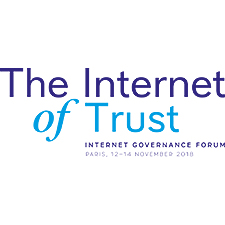Net neutrality and beyond: Ensuring freedom of choice online
13 Nov 2018 10:15h - 11:45h
Event report
[Read more session reports and live updates from the 13th Internet Governance Forum]
The session discussed regulatory approaches towards net neutrality on three levels: global, regional, and local. On the global level there is evidence for existing consensus around definitions of reasonable traffic management, as well as transparency about complaint procedure. On the regional level, the European Union is building efforts in facilitating co-operation and dialogue among national regulatory authorities (NRAs). At the national level, two examples were presented: India’s ban on zero-rating practices, and the work of the Canadian Authority in charge of broadcasting and telecommunications (CRTC).
Mr Vincent Toubiana, Autorité de Régulation des Communications Electroniques et des Postes, ARCEP, stated that the purpose of this workshop was to identify and qualify the elements that restrain the use of the Open Internet. He explained that net neutrality is connected to the freedom of expression as net neutrality is more than just a discussion about speed and access to content, it concerns users’ freedom of choice online.
Ms Anaïs Le Gouguec, Market and Economic Analysis Expert Working Group co-Chair, Body of European Regulators for Electronic Communications (BEREC), explained that ARCEP is the body in charge of implementation of the Net Neutrality provisions in France. The European Union’s regulation 2025/2120 lays down the measures concerning open Internet access. It contains practices for end-users to access and distribute information as well as guidelines on how to use and provide applications and other Internet access services. She maintained that despite fast technological development in the Internet field, such regulation will not become obsolete because regulations allow regulatory bodies the necessary flexibility to adapt to developments. Moreover, the regulation contains general principles including a toolbox which can easily adapt to different situations.
She said that the European regulatory framework has enabled co-operation between the different national regulation agencies (NRAs) across Europe. This is because all European NRAs meet regularly to discuss the latest issues and they are supported by an expert working group which helps NRAs to build knowledge and provide better analysis on new developments. Finally, the heads of the European NRAs also meet four times per year in a plenary debate.
Mr Philippe Tousignant, Canadian Authority in charge of broadcasting and telecommunications (CRTC), explained that CRTC’s activity concerning net neutralityis based on two different authority provisions. The first provision operates under a principle-based approach: no carrier should provide services with undue preference or unjust discrimination. The second one ensures the prevention of regulators from interfering with the content.
These provisions are based on two regulatory approaches. The first is restriction of Internet management practices (ITMP), that restricts Internet management practices to very limited circumstances that are legitimate thus creating a framework whereby the carriers cannot use Internet management to tunnel traffic, except in a limited way (e.g. to address a security issue or a network congestion issue). On the other hand, the differential pricing framework (DPP) establishes some stringent criteria determining which differential pricing strategies would be appropriate. The rationale is that if a service provider treats certain origin data differently than others, then the threshold for it to be acceptable by the Commission would be extremely high.
Mr Sunil Bajpai, Telecom Regulatory Authority of India, asserted that ‘stating the principle of net neutrality willnot be enough. Monitoring, enforcement, and interpretation in specific cases will be important’. He explained that India is the first country in the world for data consumption in gigabytes for mobile devices. He presented India’s legal framework towards net neutrality. In 2015, India banned the so-called ‘zero-rating’ practice, namely providing Internet access without financial cost by only permitting access to certain websites or by subsidising the service with advertisements. Moreover, India has established that no content or application should be discriminated against by Internet access providers. Finally, India has also included neutrality regulations and guidelines as a part of the licence itself. Regulations on transparency are currently being framed and the setting up of a multistakeholder body that will govern net neutrality has been envisaged.
Ms Amba Kak, Mozilla Foundation, stated that the global commitment towards net neutrality is stronger than ever. She considered two traits of the global discourse around net neutrality. First, there are commonalities regarding critical definitions of reasonable traffic management and the way in which specialised services are being understood. Second, there is consensus regarding transparency and complaint procedures especially on those rules that open up the possibility to cooperate on the enforcement methods and on the complaint mechanisms too. Many parts of the world that have chosen a strong commitment in net neutrality are giving themselves some kind of competitive edge. She concluded by referring to the zero-rating legislation in India. She stated that the Indian case is a lesson for other developing countries because it showed that net neutrality and other rights-based issues would not be an afterthought to connectivity.
Mr Thomas Lohninger, Executive-Director Epicenter.works, stated that segmentation and proliferation of differential practices are a danger to the global Internet. He presented a study analysing the different zero-rating offers present in the European Union which looks at the correlation between the existence of such differential pricing offers and the price of mobile data volume in the EU markets. There is general trend of 10% decrease in prices, when there is no zero-rating; whereas a 2% increase in prices when there is zero-rating. Finally, he focused on 5G network slices defined as quality of service on the radio access lay. He stated that 5G can be completely compatible with a net neutrality framework,and it allows other access products to be provisioned.
By Marco Lotti
Related topics
Related event

